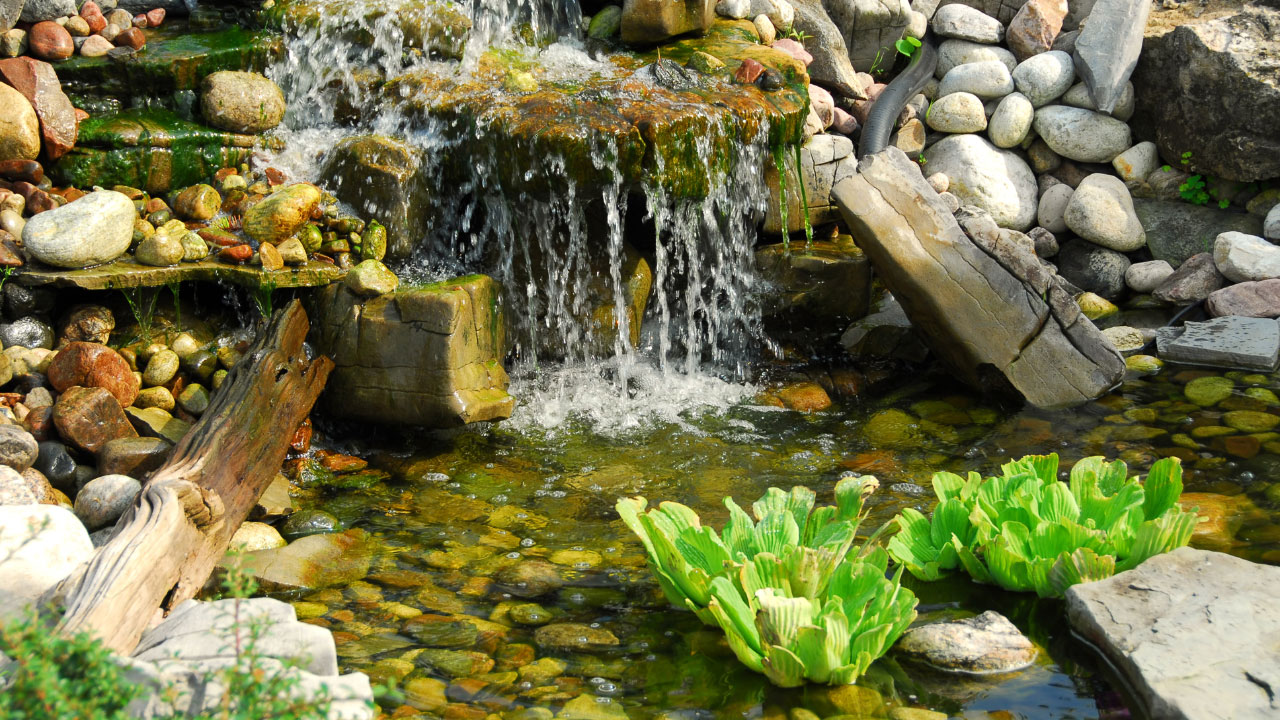 Incorporating a waterfall into your backyard pond not only elevates its aesthetic appeal but also enhances the overall ambiance of your outdoor space. The soothing sounds of a cascade of water can transform your garden project into a serene, relaxing space, perfect for unwinding after a busy day. Let’s dive into how waterfalls can enrich your backyard pond design and bring your outdoor living space to life.
Incorporating a waterfall into your backyard pond not only elevates its aesthetic appeal but also enhances the overall ambiance of your outdoor space. The soothing sounds of a cascade of water can transform your garden project into a serene, relaxing space, perfect for unwinding after a busy day. Let’s dive into how waterfalls can enrich your backyard pond design and bring your outdoor living space to life.
The Beauty and Benefits of Waterfall Features
Soothing Sounds and Aesthetic Appeal
The gentle sound of water moving over rocks and cascading down a waterfall structure creates a tranquil sound environment, promoting relaxation and reducing stress. Visually, waterfalls add dynamic movement and a pleasing aesthetic to outdoor water features, increasing the visual appeal and overall value of your backyard space.
Enhanced Water Quality and Aquatic Life Support
Waterfalls contribute to maintaining clean and oxygenated pond water, which is essential for supporting healthy aquatic life. The flow of water aids in the circulation and aeration of pond water, preventing stagnation and promoting a healthier environment for fish, water lilies, and other aquatic plants.
Natural Cooling and Humidity
The movement of water through a waterfall feature can help moderate water temperature, especially during hotter months. This natural cooling effect can make your outdoor living space more comfortable and provide a more suitable environment for water plants and aquatic animals.
Design Considerations for Incorporating Waterfalls
Landscape Design Integration
When planning your waterfall, consider the overall landscape design and how the feature will integrate with existing elements. Whether opting for a tall waterfall that makes a dramatic statement or a series of spillway rocks for a more gentle cascade, ensure the design complements your garden’s aesthetic and fits naturally into your outdoor space.
Choosing the Right Materials
Select materials that blend well with the rest of your backyard and pond setting. Natural rock and flat rocks are popular choices for creating a more organic look, while manufactured materials like concrete or resin can be used to form a variety of waterfall designs. The key is to maintain a balance that enhances the natural beauty of your backyard ponds.
Water Flow and Filtration
Ensure your waterfall feature is equipped with a proper submersible pump to maintain consistent water flow and assist with filtration. The size of the pump and the design of the waterfall will influence the flow of water and the resulting sound, so consider these factors carefully to achieve the desired effect.
Lighting and Additional Features
Incorporate landscape lighting to highlight your waterfall feature and extend its enjoyment into the evening. Additionally, consider adding water jets or other types of water features to further customize your waterfall and add variety to the water movement.
Creative Waterfall Designs For Your Backyard Garden
Waterfalls and other relaxing water features can transform backyard ponds and outdoor spaces into tranquil retreats filled with soothing sounds and stunning visuals. Here are various types of waterfall designs to consider for elevating your backyard water feature:
1. Natural Rock Waterfalls
This type of waterfall design mimics natural landscapes, using stones and boulders to create a cascade of water that looks as though it has been shaped by nature itself. Natural rock waterfalls are ideal for creating a rustic or woodland garden vibe.
They can vary from a single tall waterfall structure to multiple spillway rocks creating a series of smaller cascades. Planting native plants and water lilies around the edges can enhance the naturalistic feel.
2. Formal Waterfalls
For those with a more contemporary or formal landscape design, a formal waterfall might be the perfect fit. These often feature clean lines, geometric shapes, and materials like stainless steel or polished stone. Water walls and sheer descent waterfalls fall into this category, providing a sleek, modern look that can become a focal point in any outdoor living space.
3. Pondless Waterfalls
If space is limited or if child safety is a concern, pondless waterfalls offer a fantastic alternative. These water features recirculate water from a hidden reservoir through a submersible pump, allowing the water to flow over rocks or other materials without needing a traditional pond.
4. Tiered Waterfalls
Tiered waterfalls feature multiple levels or steps from which water cascades down. This design can create a dramatic visual effect and a range of soothing sounds as the water moves from one level to the next. Tiered waterfalls can be adapted to fit various landscape styles, from tropical paradises to classic garden settings, and can be built using flat rocks, natural stones, or even prefabricated materials.
5. Rain Curtain Waterfalls
For a unique and elegant touch, consider a rain curtain waterfall. This design consists of a thin, even sheet of water that falls straight down, resembling a curtain of rain. This can be installed against a backdrop like a wall or fence and is often illuminated with landscape lighting to enhance its visual appeal, especially at night.
6. Japanese-Inspired Waterfalls
Inspired by traditional Japanese gardens, these waterfalls emphasize harmony, balance, and tranquility. They typically feature a gentle flow of water over natural rock, accompanied by aquatic plants, water lilies, and even koi fish. Japanese-inspired waterfalls create a serene oasis that invites reflection and relaxation.
Creating a Cohesive Water Garden
Beyond the waterfall itself, think about the surrounding environment. Incorporate a range of shapes and sizes of aquatic plants, water lilies, and native plants to create a lush, vibrant water garden. This not only adds to the aesthetic appeal but also provides essential habitats for wildlife and contributes to the ecological balance of your pond.
Regular pond maintenance will ensure your waterfall continues to function effectively and remains a beautiful and enjoyable feature of your backyard pond.
Enhance Your Backyard with OC Pond & Fountain Care
Ready to transform your backyard pond with a stunning waterfall feature? OC Pond & Fountain Care offers professional backyard pond design services to help you create the perfect outdoor space. From custom waterfall designs to complete pond installations, our team can bring your vision to life, enhancing the aesthetic and tranquil sound of your garden project.
Elevate your outdoor space with a bespoke waterfall feature. Contact OC Pond & Fountain Care today to discover the myriad benefits and start your journey to a more aesthetic and relaxing backyard oasis.
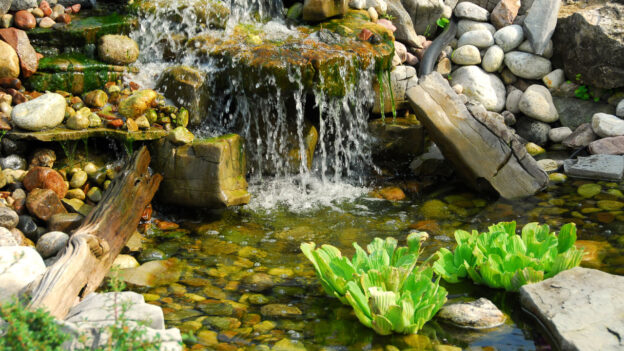
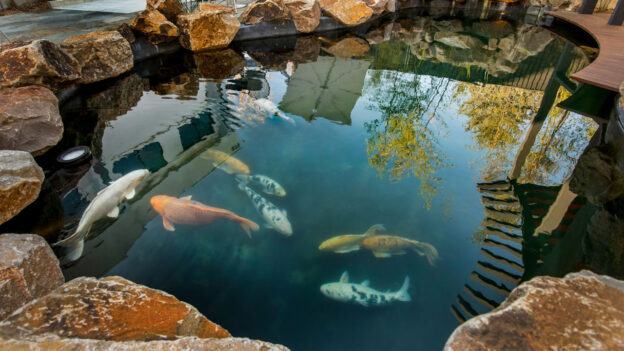
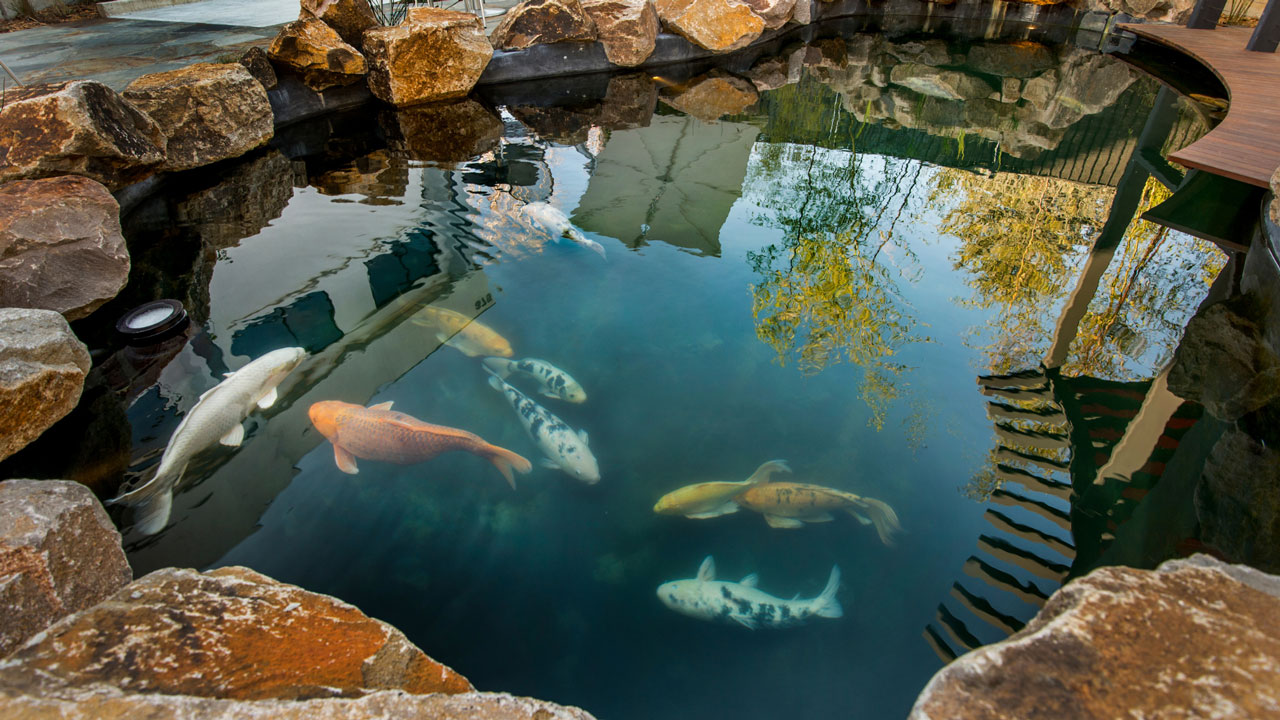 Creating an eco-friendly backyard pond involves more than just aesthetic appeal; it’s about constructing a sustainable ecosystem that harmonizes with the environment, conserves resources, and promotes biodiversity. Sustainable
Creating an eco-friendly backyard pond involves more than just aesthetic appeal; it’s about constructing a sustainable ecosystem that harmonizes with the environment, conserves resources, and promotes biodiversity. Sustainable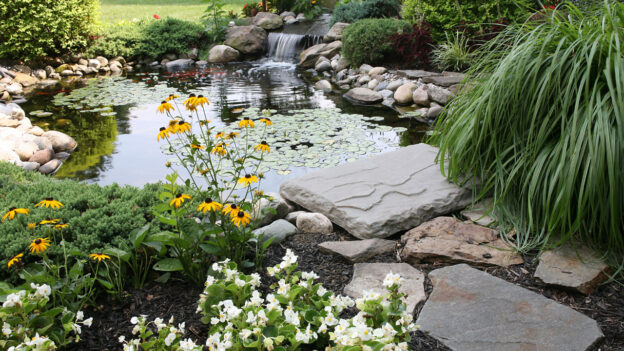
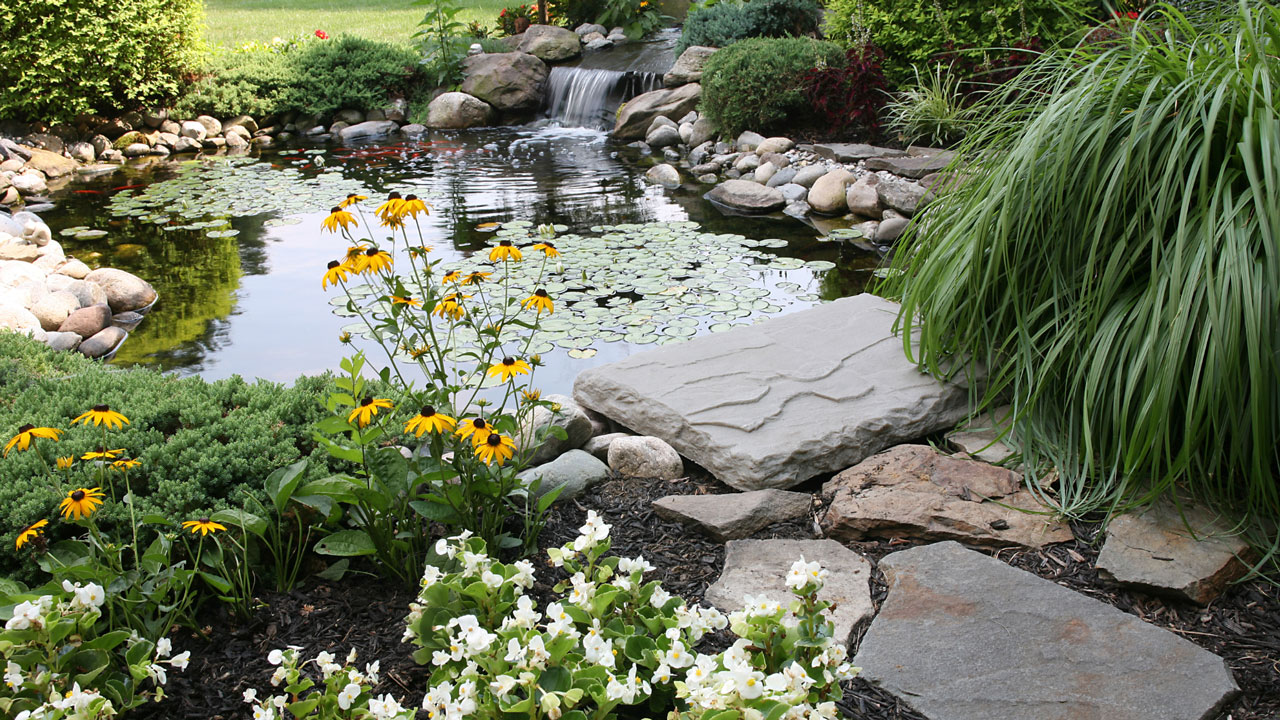 Water plants play a crucial role in enhancing the beauty, ecological balance, and overall appeal of backyard ponds. From providing habitat for wildlife to adding visual interest and improving water quality, incorporating aquatic plants can take your backyard pond to the next level. In this comprehensive guide, we’ll explore the benefits of water plants and provide tips on how to incorporate them effectively into your
Water plants play a crucial role in enhancing the beauty, ecological balance, and overall appeal of backyard ponds. From providing habitat for wildlife to adding visual interest and improving water quality, incorporating aquatic plants can take your backyard pond to the next level. In this comprehensive guide, we’ll explore the benefits of water plants and provide tips on how to incorporate them effectively into your